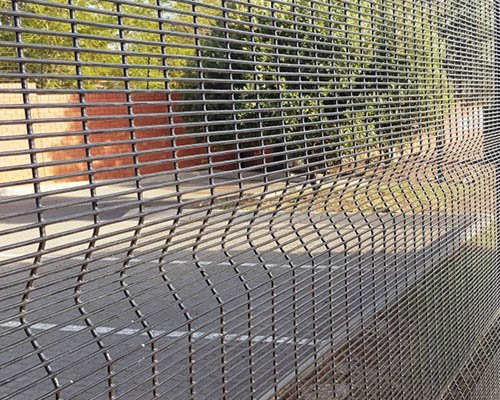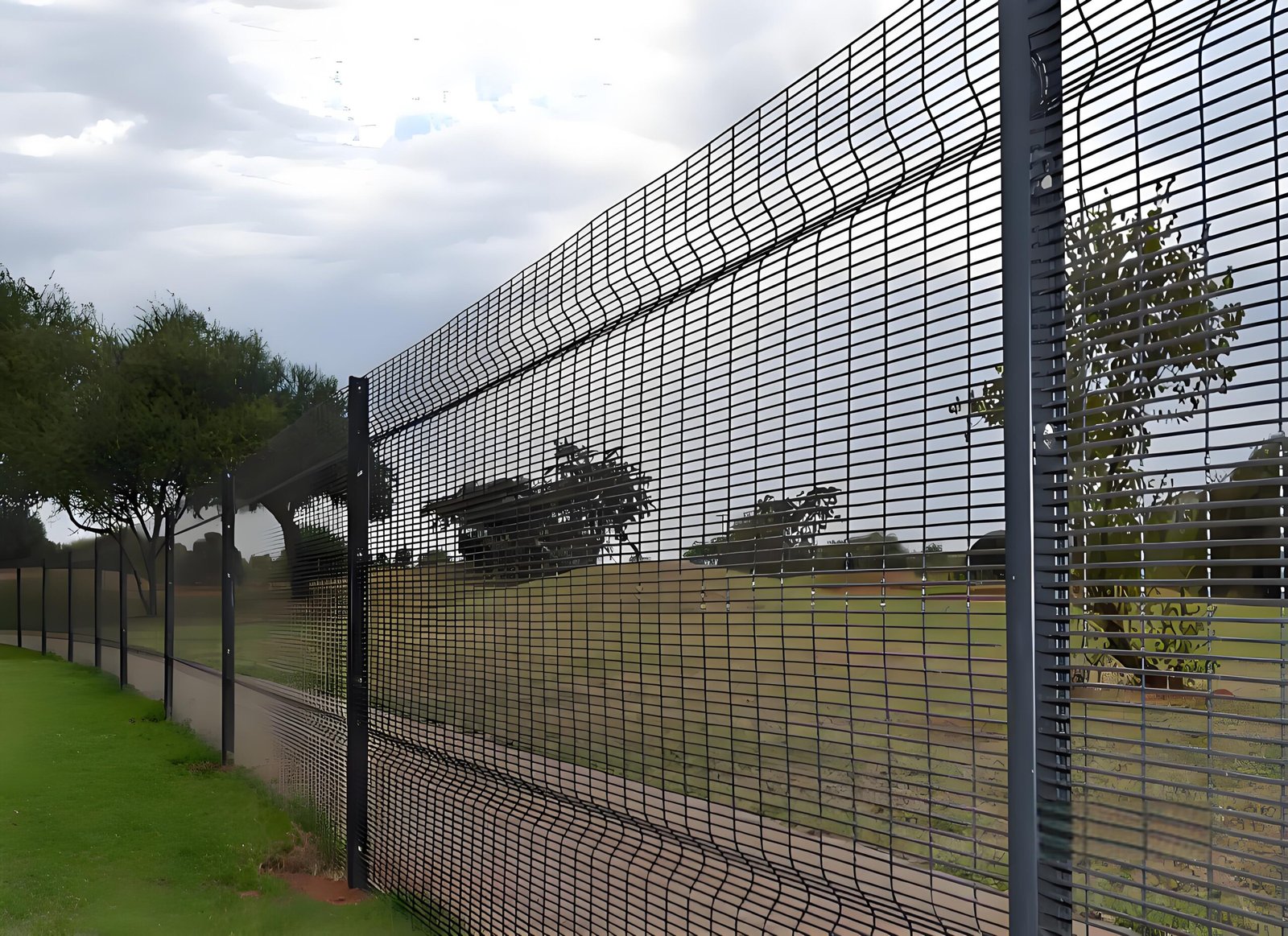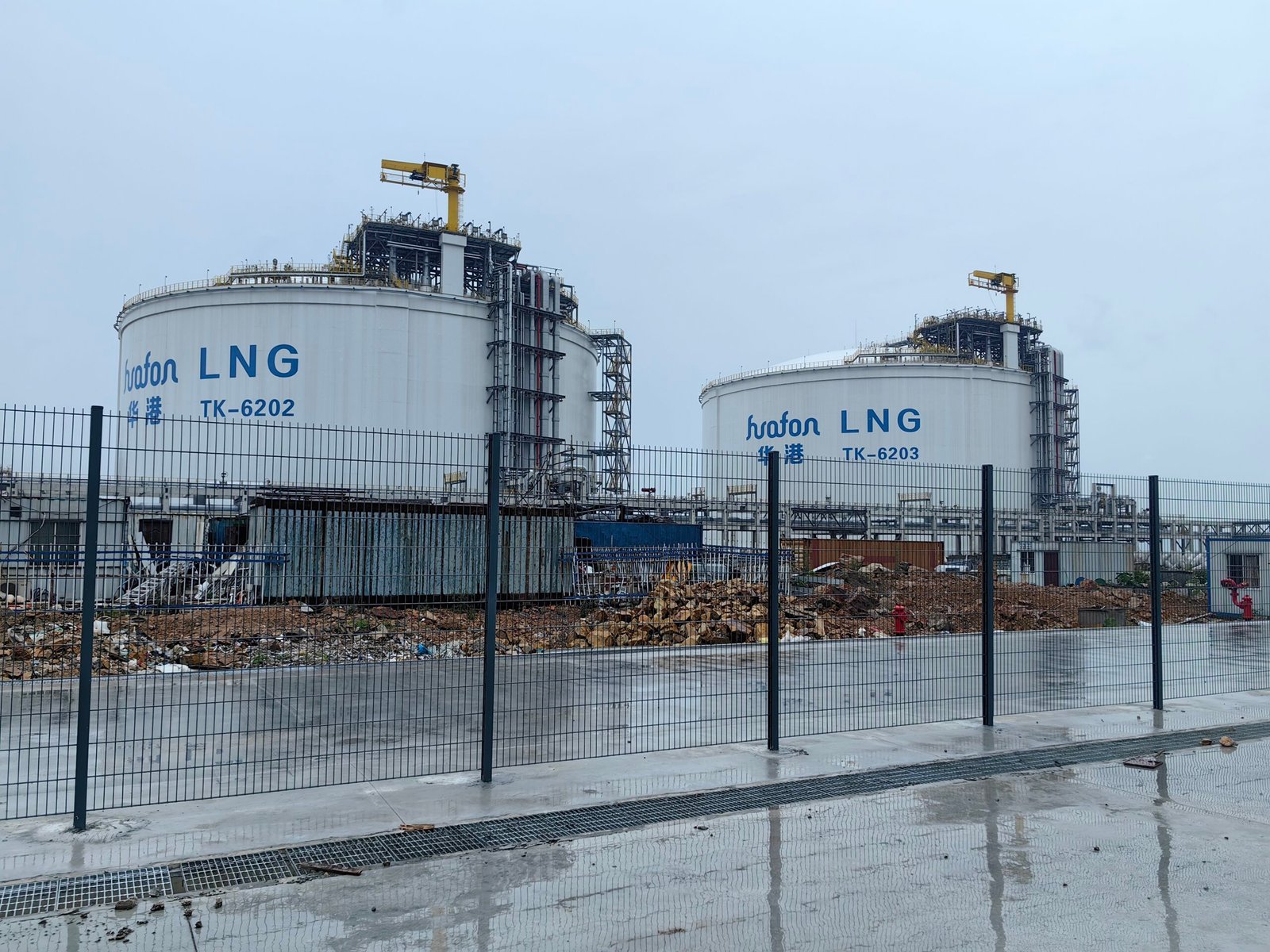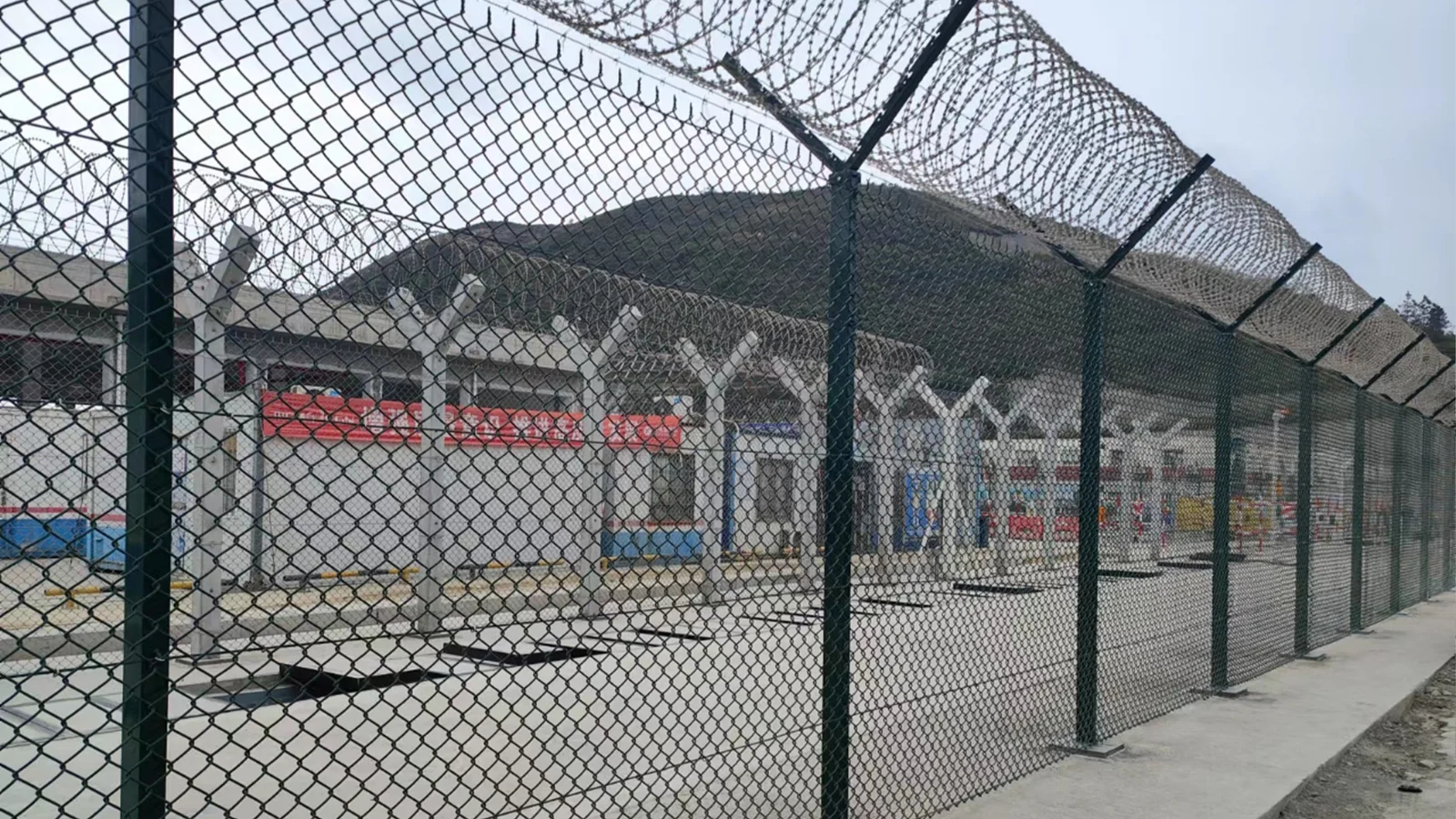Table of Contents
ToggleUnderstanding Galvanized Steel Fencing
Galvanized steel fencing is an essential component in various industrial applications, renowned for its enhanced durability and resistance to corrosion. The galvanization process involves coating steel with a layer of zinc through a method either by hot-dipping or electroplating. This protective layer serves as a barrier against environmental elements, significantly prolonging the lifespan of the steel. While ordinary steel is susceptible to rust and deterioration upon exposure to moisture and other corrosive conditions, galvanized steel provides a robust solution that withstands such challenges effectively.
The composition of galvanized steel fencing typically includes a carbon steel core that is uniformly coated with zinc. This combination not only fortifies the metal but also enhances its aesthetic qualities, making it suitable for various settings. In industrial contexts, galvanized steel fencing can be seen surrounding construction sites, warehouses, manufacturing plants, and other locations that necessitate secure and durable barriers. These applications leverage the material’s strength to ensure safety and containment, while the corrosion resistance eliminates frequent maintenance concerns associated with traditional fencing materials.
Additionally, galvanized steel fencing is often preferred for its cost-effectiveness over time. The initial investment may be higher than that of other materials; however, the longevity and reduced need for repairs result in significant savings for businesses in the long run. Enhanced security features further solidify its appeal in industrial environments, where safeguarding physical assets and personnel is of paramount importance. Thus, galvanized steel fences emerge as a reliable choice, proving advantageous for numerous applications across diverse industrial sectors.
Advantages of Galvanized Steel Fencing
Galvanized steel fencing offers an array of benefits that make it an optimal choice for industrial environments. One of the primary advantages is its exceptional strength and durability. Galvanized steel is manufactured through a process that coats steel with a layer of zinc, enhancing its structural integrity and allowing it to withstand harsh weather conditions, physical impact, and heavy wear that are common in industrial settings.
Another significant advantage is its resistance to rust and corrosion. Unlike traditional steel fences, which may succumb to environmental factors, galvanized steel undergoes a prolonged life cycle due to the zinc coating that protects it from moisture and other corrosive agents. This property is particularly beneficial in areas prone to humidity or exposure to chemicals, ensuring that the fencing remains functional and aesthetically appealing over time.
Additionally, galvanized steel fencing has low maintenance requirements, which translates into reduced labor and costs associated with upkeep. Industrial facilities often operate on tight budgets, and the durability of galvanized steel means that periodic maintenance tasks are minimized. This makes it a practical solution for organizations that aim to manage operational expenses effectively.
Cost-effectiveness is another vital aspect of galvanized steel fencing. While the initial investment may be higher than other materials, the long-term savings generated from its durability and low maintenance needs result in an excellent return on investment. The ability to resist damages can mitigate replacement costs, further substantiating its economical appeal.
In addition to these benefits, galvanized steel fencing provides safety advantages. It serves as a formidable barrier against intruders and helps restrict access to sensitive areas, particularly in industrial sites where unauthorized entry can lead to security vulnerabilities. The robust structure of galvanized steel acts as a deterrent, helping ensure the protection of valuable assets and personnel within the facility.
Installation and Maintenance Considerations
When it comes to installing galvanized steel fencing, several key factors must be considered to ensure a successful outcome. First and foremost is site preparation. This involves assessing the terrain where the fencing will be installed. The ground should be level, and any obstacles such as tree roots or large rocks must be removed. Proper planning also includes marking the fence line to visualize placement and alignment clearly, which helps in minimizing errors during installation.
Next, selecting an appropriate fence design is crucial. Galvanized steel fencing comes in various styles, including chain-link, welded wire, and ornamental designs, each of which may serve different purposes. The choice should be informed by factors such as the purpose of the enclosure, the desired aesthetic, and regulatory requirements. Each design may also require specific installation techniques and tools; hence, having the correct equipment readily available is essential. Common tools for installation include post hole diggers, levelers, and concrete mix for securing posts in the ground.
After installation, maintaining galvanized steel fencing is vital for ensuring its durability and performance over time. Routine inspections should be conducted at least twice a year, focusing on identifying rust, loose hardware, or any structural damage. Cleaning the fence periodically, using a gentle detergent and soft brush, helps prevent the accumulation of dirt and debris, which can lead to corrosion. If rust is discovered, it should be addressed immediately with a rust-inhibiting primer or a paint specifically designed for galvanized surfaces. Moreover, troubleshooting common issues, such as bent panels or loose fittings, can prolong the fencing’s lifespan. By following these installation and maintenance guidelines, galvanized steel fencing can greatly benefit industrial environments, providing security and reliability for years to come.
Comparing Galvanized Steel Fencing with Other Materials
When evaluating fencing options for industrial applications, it is essential to compare galvanized steel fencing with other commonly used materials such as chain-link, wood, and aluminum. Each material possesses distinct advantages and disadvantages that can significantly influence purchasing decisions based on specific needs and environments.
Galvanized steel fencing is widely recognized for its durability and resistance to corrosion, which is particularly beneficial in harsh environments. Its longevity often exceeds that of other materials, lasting upwards of 50 years with proper maintenance. This contrasts sharply with wood fencing, which, despite its aesthetic appeal, suffers from susceptibility to rot, pest damage, and weather-related deterioration. As a result, wood may need to be replaced or maintained every 5 to 15 years, leading to higher long-term costs despite lower initial investments.
Chain-link fencing represents another option that provides a cost-effective solution for many industrial applications. However, it is generally less robust than galvanized steel fencing and offers limited security. Chain-link may require additional enhancements, such as barbed wire, to meet security requirements, which can drive up expenses. Conversely, galvanized steel provides a formidable barrier that is inherently tougher and less prone to tampering or damage.
Aluminum fencing is lightweight and resistant to rust, making it suitable for various applications. However, it typically lacks the strength and sturdiness of galvanized steel. For industrial operations that necessitate high levels of security and protection, the capacity of galvanized steel fencing to withstand environmental stressors and potential impacts presents a significant advantage.
In conclusion, while there are various fencing options available for industrial scenarios, galvanized steel fencing stands out due to its exceptional durability, maintenance costs, and security features, making it a superior choice for industries prioritizing long-term value and effective protection.









